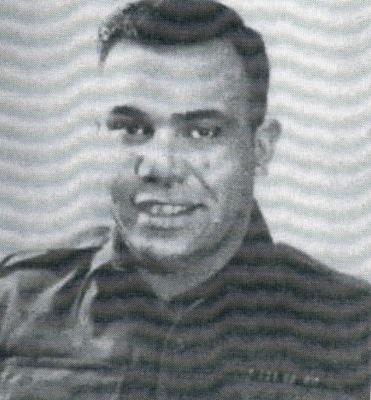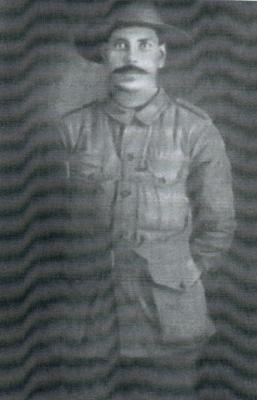By John Telfer, History Writer
The heroic stories of the Anzacs held the centre piece of Australia’s history in the World War 1 and World War 2 periods, and will always be part of the nation’s psyche for many years to come.
However, a slight dampener to Australian military history was the discrimination against indigenous volunteers attempting to enlist to fight for the defence of their country.
Although prior to Federation, records show that 70 indigenous soldiers went to the Boer War in 1899 – 1900, it was the Defence Act of 1903 that stated: “males aged 12 – 25 would receive military training. Aboriginals were not of European descent so were exempt”.
It was when Australia raised the 1st Australian Imperial Forces to support England in the Great War of 1915 – 1918, that this blatant discrimination became apparent when Recruiting Depots were instructed that: “Aboriginals, half-cast, or men with Asiatic blood were not to be enlisted”.
In many cases evidence showed that some military medical officers ignored, to their credit, this order and passed them as fit but, put on their enlistment papers: “of dark complexion”.
It was after the Conscription crises in 1917 that, because of the heavy casualties in France, a military order came out stating that: “Half-casts may be enlisted in the Australian Imperial Forces provided that the medical officers are satisfied that one parent is of European origin”.
It was only then that records show (ones that are recorded), around 500 who were accepted in World War 1.
Indigenous soldiers who enlisted found that there was little discrimination once they were on the battle front, as they received equal pay and conditions as other Australians and many served with distinction.
In World War 1, a total of 3 Distinguish Conduct Medals, 11 Military Medals and 2 Mentioned in Despatches were awarded to Indigenous soldiers. As this story is limited, one of these soldiers and his bravery needs a mention and it is Corporal William Allen Irwin from Coonabarabran, New South Wales.
He enlisted at Narrabri on 3rd January 1916, and was posted to the 33rd. Battery, C Company, in France.
On 31 August 1918, William’s bravery was recorded in the London Gazette, as to how he won the Distinguished Conduct medal. His citation read:
“For, conspicuous gallantry and devotion to duty during operations at Road
Wood on 31st August 1918.Singlehanded, and in the face of heavy fire, he
rushed three separate machine gun nests, capturing the gun and crew. While
rushing a fourth he was severely wounded. His courageous dash inspired the
whole of his company”.
William Irwin was wounded three times in battles on the Western Front serving as a front-line infantry soldier.
He gained huge respect from his men and was always leading from the front.
Unfortunately, this is what led to William being severely wounded on 31 August 1918.
He was admitted to the 6th Australian Field Ambulance and taken to the 61st Casualty Clearing Station, France, where he succumbed to his wounds and died on 1 September, 1918.
William lies at rest in the Darous Communal Cemetery, France.
Other World War 1 indigenous medal winners included the following: Distinguished Conduct Medals – Albert Knight, Richard Kirby.
Military Medals – William Knight, Maitland Madge, Fred Prentice, Fred Briggs, William Rawlings, Harry Thorpe, Augustus Farmer, Ray Runga, Vivian Andrews, Charles Hearps, Jack Johnson.
Mentioned in Despatches – Frank Stewart, W.J.Jonas.
All Gazetted awards made reference to their outstanding bravery.
In World War 2 the entry requirements for indigenous only slightly improved, but the defence of Australia from Japanese incursions from the north saw around 3000 indigenous servicemen accepted into the forces.
Once again, they showed outstanding bravery in battle, but little is known of their efforts.
A good example was shown by Tim Hughes, a Narungga/Kaurna man from Point Pearce, South Australia, serving with the 2/10th Battalion, who won a Military Medal for outstanding bravery in 1943, during the intense conflict with attacking Japanese forces at the Buna airstrip in New Guinea.
Here is an extract from the London Gazette on Tim’s award:
“The platoon was pinned down. So, to allow his platoon to dig in
Private Hughes volunteered to climb on top of Dispersal Bay under
concentrated enemy fire from three directions. From this position he
engaged two of the enemy machine gun posts with grenades. He then
returned for a machine gun, and from his position on Dispersal Bay, gave
covering fire while his platoon moved under cover. During this period that
his platoon was consolidating, he made three separate sorties with grenades
and machine gun. Private Hughes showed remarkable bravery, exceptional
coolness and initiative. His total disregard for his own safety set a fine
example throughout the platoon, and also, throughout the Company”.
Clive Upright also won a Military Medal when fighting against an entrenched Japanese force, around Sauri village in Bougainville, on 11 May 1945.
Australia’s First Nation people can be intensely proud of their contribution to the defence of Australia in both world wars despite the discrimination against them.
Since 1949, indigenous entry into the armed forces in Australia has vastly improved and Australian War Memorial researchers Phillipa Scarlet and Christine Cramer pointed out in their written precis as late as 22 April 2021, when they reported:
“Today, we are richer as a nation for the inclusion of aboriginal
war service in Australia’s Anzac commemoration and for fact
that aboriginal service has at last achieved its rightful place as
an identified part of Australia’s history”.








